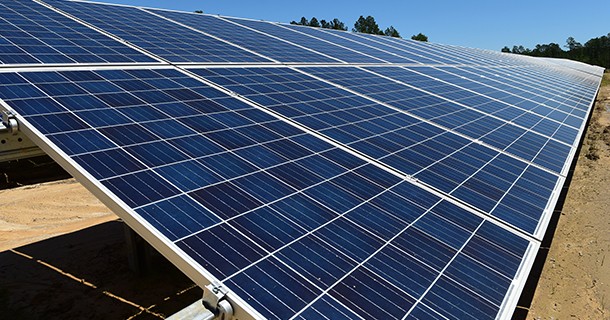Surge Protectors
How can surge protectors help me?
Properly installed surge protectors help prevent damage to electronic equipment caused by momentary large voltage surges. These surges are associated with events such as lightning strikes, short circuits, load switching, equipment failure and similar unusual events.
What are some other important features of a surge protector?
Select a surge suppressor to include the following features:
- Indicators that the device is working and not damaged
- Thermal fusing to reduce the possibility of fire should the surge suppressor fail
- Protection against short circuits, either fuses or circuit breakers
- Quality materials used in the construction of the product.
Do surge protectors make sense for refrigerator equipment?
Yes, they do. Just as electronic equipment can be damaged by large voltage surges, so can refrigerators.
Do surges (or overvoltages) only go through the electric power system?
Surges may appear on other systems entering the building such as the telephone system and the cable TV system, or branch circuits from the electrical system to outside lighting and signs. Secondary surge protection is recommended for electronic equipment at the point of use that protects all electrical and data connections to the equipment.
How can I be sure I'm getting protection for my particular application?
The correct way to protect an electrical device against surges is to provide a properly designed surge protector that provides protection for all electrical conductors into the device. A computer with a modem and network connection must have a surge protector designed to protect the electrical connection as well as the telephone circuit and the network cable.
How do you protect sensitive equipment, like computers, from electrical surges?
To properly protect your sensitive electronic equipment you must construct a barrier around it much like you would put a fence around your home. Since you usually can’t prevent the things like lightning that damage your home electronics, you must keep these conditions from getting to your important equipment. Every piece of electrical equipment in your home needs a barrier. Just as it would be silly to dead bolt your front door, then leave the windows wide open, the same is true of your electrical equipment. Every avenue to the outside world must be protected — power, phone, cable, data and control lines must all be protected or your equipment will be vulnerable to damage.
Begin power protection at the main power entrance, the point where your power, cable and phone lines enter the house. By installing a high-energy surge protection device at this location, you can knock down the first wave of high voltage spikes entering your home. Most contractors call these lightning arrestors but don’t confuse these devices with a lightning rod. Lightning rods are installed to protect the house from physical damage in case of a direct hit. They won’t protect electrical equipment inside the home. The lightning arrestor is a device that helps divert damaging surges away from your electrical system and out through your ground rod. The cable TV line will probably enter your home near the main power entrance as well. It’s best to have all of your utilities enter your home at one point because it allows you to tie all of their ground rods together to form a single grounding system. This is required by some codes but it’s often overlooked by cable installers. Unless all of your equipment ties into a single ground, protection against surges won’t be as effective.
Moving inside your home, the television, DVD, DVR, CD player and stereo system represent a considerable investment, and they can be easily damaged by spikes. Each should be plugged into a plug-in surge protector. Use a protector that has multiple outlets allowing one device to protect your entire entertainment center. If you have cable service, the lead into the house should be surge-protected as well. Everything should be protected. If you protect your stereo but leave the CD player unprotected, the connection between the two devices provides a path for spikes. Some appliances containing electronic controls (i.e. microwave ovens) may also require surge protection. Make sure you use a surge protector designed for “heavy duty use”. There are surge protectors designed especially for microwaves.
Telephones and answering machines are some of the most commonly damaged devices in the home. A plug-in surge suppressor should be used to protect the power and phone line inputs. A common mistake is protecting only the power line. This does not provide adequate protection. Using a device that contains both protection elements in a single package is best and ensures system compatibility. These devices will have inputs for the phone line and the electric plug. If either line goes directly to the equipment, the equipment is not completely protected.
To prevent the flashing “12:00? problem, look for clocks and DVD players with built-in battery back-up. Battery back-ups are not designed to keep the unit operating during a power outage, but it will preserve the memory and settings so they will still be there when the power comes back on.
What is an "automatic cutoff" feature?
A surge suppressor may be protected with a fuse device and meet code in one of two ways. Many open the circuit to the protective element that may be damaged from a large transient; allowing future surges to pass into the "protected equipment" which may cause damage. Some better designs protect the surge protector by fusing in such a way that the fuse opens the circuit to the protective element as well as the protected load. Thus, a failed surge protector will not continue to power the electronic system that it is protecting.
Will surge protectors prevent my house from being struck by lightning?
While surge protectors won’t prevent lightning from striking your house, they will protect your appliances and home electronics from being damaged by momentary electrical spikes and surges.
What does the Suppression Voltage rating mean?
A surge protection device that is listed under UL 1449 is given a voltage let through rating by UL. This represents the highest transient voltage that the suppressor allowed to pass into the protected load under test conditions. It may be used as a measure to compare one suppressor to another. We suggest a maximum let-through voltage of 500 volts.



